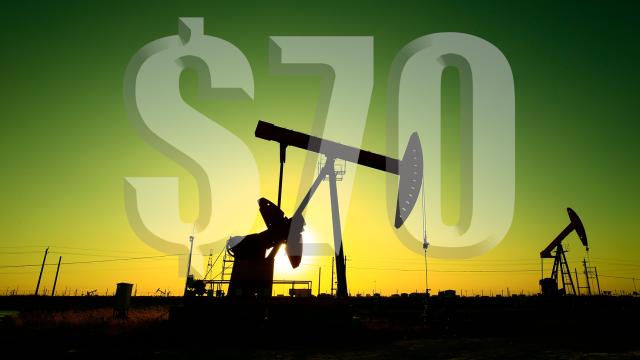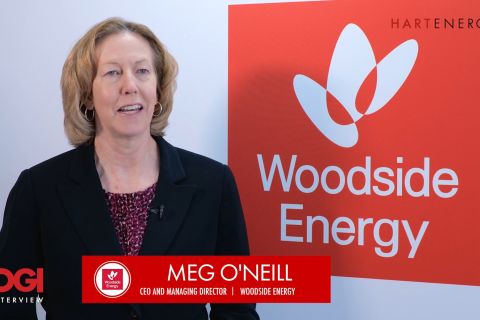
(Source: Shutterstock, Hart Energy)
HOUSTON—Not many people believe her argument that oil prices are primed to jump above $70 a barrel (bbl) by the end of 2019, Nicole Leonard said, especially with the tumble at the end of 2018.
But it’s going to happen—the numbers are what they are. And it will happen as a result of a series of triggers across the oil and gas value chain as production continues to bound forward, especially in the Permian Basin; pipelines come online faster than expected; and capital is freed up for a massive midstream infrastructure buildout.
How does all of this piece together? We’ll start with the downstream sector.
“We’re going to go back up in terms of oil prices because refineries in the next eight months, 10 months are going to have to consume more oil to meet their IMO spec demand,” said Leonard, Senior Energy Analyst, Commodity Consulting, S&P Global Platts, at the S&P Global Ratings oil and gas breakfast forum on Feb. 11.
Leonard was referring to a major change in fuel regulation that goes into effect next year. The International Maritime Organization (IMO) has mandated that the world’s shipping fleet must change to lower-sulfur fuel to reduce emissions of toxic sulfur oxides. The global sulfur cap on fuel content will be reduced from the present 3.5% to 0.5%. Refining that fuel will result in a significant increase in demand for oil—particularly light, sweet crude.
“In 2020 when it actually happens, we’re going to see volatility, we’re going to see refineries scooping up oil, bidding up prices, and that’s why we’re getting above $65, $70 WTI [West Texas Intermediate],” she said.
Getting that oil will require easing those pipeline constraints from the major basins, but that relief is finally being delivered.
“Pipelines are coming online faster than anticipated, which is definitely a different story than what we’ve been telling you in the past, but it’s helping us to continue to grow in the next few years,” Leonard said, “By the end of 2020, we’re looking at a potential 2 million barrels a day [bbl/d] of overbuild.”
Overbuild has been a concern for the midstream in the past but it’s not overbuild if production increases to fill those pipes, and production is going to increase, Leonard promised. A lot.
At the moment, the U.S. is producing 30 million bbl/d of energy, including crude oil, natural gas and NGL. Over the next three to four years, S&P Global Platts sees that figure rising by 7 million bbl/d.
“This is significant growth,” Leonard said. “We need more infrastructure to support this kind of growth—a 25% increase in the supply of energy. The Permian is going to be the driver.
“From 2018 to 2023, the Permian will account for 75% of U.S. energy growth. It could be a lot higher,” she said. “Yes, the Permian is an oil play, but as producers move west in the Permian, we’re seeing gassier NGL-rich production.”
But building that infrastructure requires access to capital, and as a survey of attendees at the event showed, access is a major concern for the sector. That should change, Leonard said, because of the upswing in production.
There are about 3,500 wells that have been drilled but uncompleted (DUC) because of a lack of transportation. S&P Global Platts estimates those DUCs could produce in the range of 2 million bbl/d and 4 billion cubic feet of gas per day. Investors need to see a future supply to warrant supporting a project, and the estimated pipeline overbuild could be filled by DUCs alone.
So a global regulation compels an increased demand for crude oil to make the needed refined product from the downstream, accelerated production provides said crude oil, and the capitalized midstream moves it all to market. What could go wrong?
Leonard listed several factors:
- A volatile market;
- Slower growth in China; which could lead to
- The possibility of a global recession.
There are also worries swirling around the IMO 2020 set of regulations. The financial status of shippers does not look good, said Thomas Watters, managing director of U.S. upstream oil and gas for S&P Global Ratings, bringing into doubt the ability of the industry to upgrade equipment and pay for the more expensive low-sulfur fuel. While U.S. refiners that operate complex facilities are in relatively good shape, there will be winners and losers in this equation, Watters said.
“Think of the guys on the E&P side of things—anybody who’s making heavy, sour crude probably won’t do too well,” he said. “You think about Venezuela, you think about Mexico. U.S. light, sweet will do reasonably well. Refineries that are not complex—I don’t see how you can do reasonably well with this.”
Will the shipping industry be ready for IMO 2020, leading to a hike in demand for crude from the refining sector? Will midstream get the needed capital to build the needed infrastructure? And will the upstream meet those lofty production expectations?
Leonard is keeping a close eye on it all.
“This year and next year,” she said, “is when all the excitement is going to happen.”
Recommended Reading
NAPE: Turning Orphan Wells From a Hot Mess Into a Hot Opportunity
2024-02-09 - Certain orphaned wells across the U.S. could be plugged to earn carbon credits.
Exxon Versus Chevron: The Fight for Hess’ 30% Guyana Interest
2024-03-04 - Chevron's plan to buy Hess Corp. and assume a 30% foothold in Guyana has been complicated by Exxon Mobil and CNOOC's claims that they have the right of first refusal for the interest.
Petrobras to Step Up Exploration with $7.5B in Capex, CEO Says
2024-03-26 - Petrobras CEO Jean Paul Prates said the company is considering exploration opportunities from the Equatorial margin of South America to West Africa.
The OGInterview: How do Woodside's Growth Projects Fit into its Portfolio?
2024-04-01 - Woodside Energy CEO Meg O'Neill discusses the company's current growth projects across the globe and the impact they will have on the company's future with Hart Energy's Pietro Pitts.
Chevron Hunts Upside for Oil Recovery, D&C Savings with Permian Pilots
2024-02-06 - New techniques and technologies being piloted by Chevron in the Permian Basin are improving drilling and completed cycle times. Executives at the California-based major hope to eventually improve overall resource recovery from its shale portfolio.






